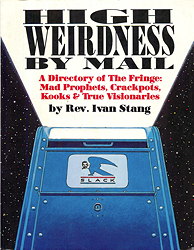Inventions
Gasoline-powered Wheelchair
Posted By: Paul - Wed Apr 21, 2010 -
Comments (4)
Category: Disabilities, Inventions, Motor Vehicles
Weird Science - Towel Folding Robot
Judging by the huge response to what I thought was a fairly large and obscure post about a tiny coincidence, the Hitchhiker's Guide and cutting-edge science is obviously a winning combination.So here is a super special Douglas Adams bonus, a robot folding towels! Okay so that's a bit of a stretch, but it is still quite cool.
Note that this video has been speeded up 50x, in real time it took the robot over an hour and a half to complete this one task. Perhaps it was feeling a little depressed?
Posted By: Dumbfounded - Sat Apr 17, 2010 -
Comments (25)
Category: Boredom, Futurism, Inventions, Robots, Science, Experiments, Technology
It’s A Bird! It’s A Plane! It’s A… Hovercraft?!
With all this talk of ground-effect craft on WU recently, perhaps you feel like owning one, and not just a rusting cold-war relic either. Well now you can as self-taught New Zealand mechanic Rudy Heeman has decided to sell the pride and joy it took him 10 years to build, a flying hovercraft.
At low speeds the vehicle behaves much as any hovercraft would, covering most surfaces with the usual ease, but over 70 km/h the craft's detachable lightweight wings kick in and it takes to the air. But despite being surprisingly nimble in flight, Heeman's invention, called the "WIG", doesn't require a pilot's license to fly (in New Zealand at least) since like all hovercraft it is classed as a marine vehicle. Video in the link (Sky News).
Posted By: Dumbfounded - Mon Mar 15, 2010 -
Comments (9)
Category: Flight, Inventions, Motor Vehicles
A Man with Vision
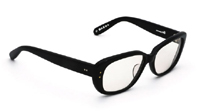
Posted By: Nethie - Sat Dec 26, 2009 -
Comments (8)
Category: Body, Health, Inventions, Science
The World’s Smallest Snowman
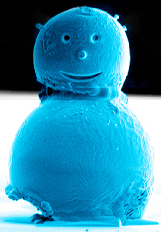
Posted By: Nethie - Sat Dec 12, 2009 -
Comments (6)
Category: Art, Crafts, Inventions, Seasonal, World Records
I’ll Huff And I’ll Puff…
From the BBC children's science show "Bang Goes The Theory...", engineer Jem Stansfield builds himself a giant vortex cannon, and tries to knock down buildings made of straw, wood and bricks...Impressive, though I'm sure the "Big Bad Wolf" would not have had much of a problem if the third little pig had likewise left out the mortar. Mind you, one of these is just what I need to keep the neighborhood cats out of my garden! :cheese:
Posted By: Dumbfounded - Tue Aug 18, 2009 -
Comments (7)
Category: Buildings and Other Structures, Destruction, Geeks, Nerds and Pointdexters, Guns, Inventions, Science, Experiments, Television, Myths and Fairytales
World’s Smallest Gun
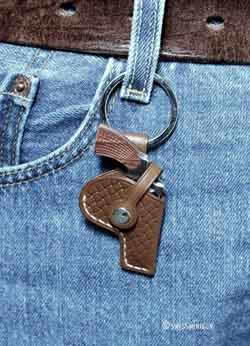
Posted By: mdb777 - Wed Jul 15, 2009 -
Comments (8)
Category: Awards, Prizes, Competitions and Contests, Guns, Inventions, Products
Flesh Eating Robots
A couple of designers, James Auger and Jimmy Loizeau, from the UK have created five robots that have a taste for meat. The "robotic furniture" is designed to look cool and to catch flies and mice. Once caught, the vermin are digested and turned into energy to power the machines. NewScientist
Posted By: mdb777 - Tue Jul 07, 2009 -
Comments (3)
Category: Design and Designers, Furniture, Inventions, Science
Great News For The Environmentally Unconscious

Posted By: Nethie - Tue Jun 16, 2009 -
Comments (5)
Category: Inventions, Science, Technology, Natural Resources
Does it Only Do Beans?
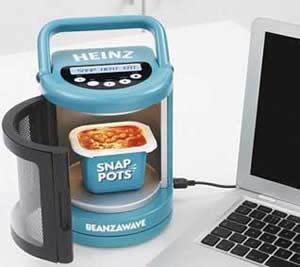
Posted By: mdb777 - Wed Jun 10, 2009 -
Comments (2)
Category: Inventions, Products

| Who We Are |
|---|
| Alex Boese Alex is the creator and curator of the Museum of Hoaxes. He's also the author of various weird, non-fiction, science-themed books such as Elephants on Acid and Psychedelic Apes. Paul Di Filippo Paul has been paid to put weird ideas into fictional form for over thirty years, in his career as a noted science fiction writer. He has recently begun blogging on many curious topics with three fellow writers at The Inferior 4+1. Contact Us |



